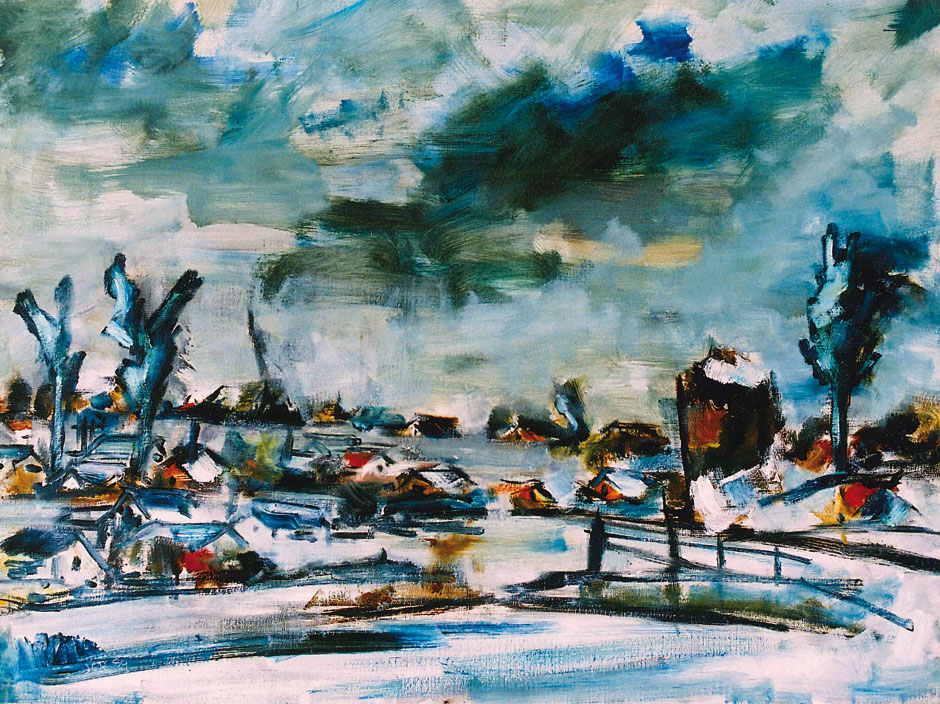The Work of Hubert Roestenburg (German Expressionism)
Hubert Roestenburg hardly ever works in his studio, preferring to work in the open. He uses his palette-knife rather than a brush. Only twenty percent of what he puts on the canvas is the picture, the rest is pure emotion, projected by color, which is mixed onto the canvas.
Color in Hubert Roestenburg’s work is present as an explosion, an eruption of violence and abundance, a feast for the senses and the mind. The colors create a symphony, either spread wide or condensed to an intense harmony, playing the artist’s own chosen melody. He uses only vaguely suggested realism whilst retaining an unmistakable link with the landscape. This is the essence of the art of painting: creating through color and form a new and irresistible personal reality which reflects the innermost being of the artist running parallel with the reality outside.
Occasionally Roestenburg’s work displays a dark and haunting passion, interwoven with yellow and brown. Stillness and silence are interrupted by a sudden outburst of life and vitality changing from one mood to another.
Roestenburg both acknowledges and controls the power of his color instinctively and through his strong pictorial sense. Exuberantly and abundantly he gives full reign to reds, yellows and greens. His control is unselfconscious, unpretentious and not unduly intellectual. The command exists simply as the sign of a mature artist.
Expressionism and Comparison with van Gogh
Hubert Roestenburg is an expressionist, seeking to express his emotional experience rather than impressions of the physical world. He does this through his extravagant use of paint and color.
In his landscapes and floral paintings one can clearly see that he has a lot in common with van Gogh, particularly in the way he uses black to express moods. A similar tension and drama are present too in the works of both artists but most of all both artists share a driving motivation.







